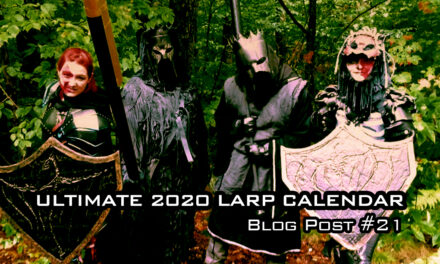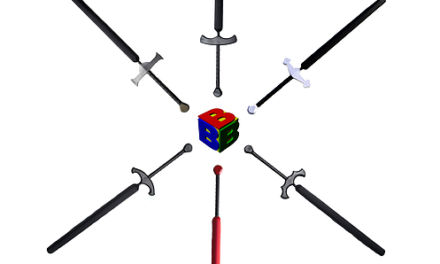If there’s one thing LARPing in New England showed us this past year was that the hobby is growing and fracturing at an increasingly frenetic pace, and also that crowd-funding your game is the space to be in.
Increasingly, LARPs are using GoFundMe and Kickstarter to finance not only new campaigns but ongoing ones as well. This has led to some accusations of a “pay to play” model. Generally speaking, this is false but it thrusts the topic of money and LARPing uncomfortably forward (always touchy, considering all staffing is done at the volunteer level) and raised the always hilarious spectre of “theory vs execution” and “unbridled enthusiasm vs skeptical mockery.”
Let’s take a look at the two biggest examples to get a greater sense of what is going on.
The 5th Gate LARP, owned by James Marston and created along with a staff of dedicated gamers who ran (and successfully concluded) years of NERO Volta, managed to raise almost $30,000 for their game – certainly an impressive figure! Some of that number however was essentially “make good” money that guaranteed players a spot at events which quickly sold-out. Essentially, people were pre-paying for 3 events up to a year in advance. This campaign, owned and run by a well-known group of gamers with years and years of experience in not only creating a game world, but having a proven track-record in executing on a vision was the most successful of the season and should be taken as a blue-print on how to Kickstart a new campaign.
As noted above, several people have looked up on this blue-print as catering toward wealthier players and essentially “selling” plot attention and direction to the highest backers. We’ll table the “pay for access to build/magic items/etc” discussion for later ,but as someone who has taken a causal NPCing interest in 5th Gate I can unequivocably state that their Kickstarter in no way affected the direction of their NPCs towards or away from contributing or non-contributing players. An import issue to remember when embarking on this sort of endeavor.

On the other side of the coin we have Sidereus. Argueably one of the first games to get into crowdfunding, they’ve had numerous successful GoFundMe campaigns leading up to their penultimate Kickstarter for the creation of a LARP campsite. Unfortunately things immediately became squirrely. The community has long grown tired of “campsite visionaries” – people who dream big but have little practical experience in building or maintaining a site. People who actually own and run popular LARP sites (Ye Old Commons, Eagle Pass, Burgundar, The Keep) can tell you just how much money and time it takes to maintain such a setting – let alone propose to build one up from scratch.
Once examined closely, the language that backed this project contained numerous other expeditures (protecting the project leaders from potential future lawsuits, for example) and was short on the type of details necessary to successfully fund a project of this size (despite well intentioned and at times aggressively defended plans, no one is going to create a Campsite with buildings for anywhere close to $50,000 in total).
Ultimately, while the Kickstarter was briefly fully funded at 108% of its goal, a dedicated group of…opponents, I suppose we should call them, played give and take with the donation levels that led to Kickstarter pulling the project. A quickly revised GoFundMe campaign, with much looser guidelines, sits at 80% – however, this is still an impressive $40,000. No updates have been provided about the status of the Campsite beyond the initial design statements at this time (9 months and counting).
In comparing and contrasting these two campaigns a few things become rather clear. Crowd Funding campaigns are successful when there are immediate, tangible goals that are proposed by seasoned creators with a proven track record, and most importantly when it works, it really, really works. In 2015 numerous other games, from Terres Rising to Second Dawn to Legendary Library have made crowdfunding part of their system – offering ‘in game’ rewards such as player-base wide additional build or treasure rewards for a token amount of buy-in. As we look into 2016 and the myriad of new games on the horizon it becomes clear that crowd funded endeavors will continue to grow, both within established games and as an almost necessary venture for new games – if only for advertising potential.





